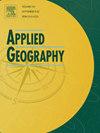Analyzing urban traffic crash patterns through spatio-temporal data: A city-level study using a sparse non-negative matrix factorization model with spatial constraints approach
Abstract
Urban traffic crashes represent a significant challenge affecting public safety and urban mobility worldwide. This study introduces a novel application of Sparse Non-negative Matrix Factorization with spatial constraints to analyze spatio-temporal patterns of traffic crashes at a city level. Using comprehensive crash data from Denver and Manhattan during 2020, we developed and validated a model capable of capturing distinct temporal dynamics and spatial distributions of traffic crashes. Unlike traditional methods, our approach integrates sparsity and spatial constraints, enhancing the model's ability to handle the inherent sparsity and geographical dependencies found in urban traffic data. The results demonstrate the model's effectiveness in identifying high-risk areas and times, providing actionable insights that can inform urban planning and targeted safety interventions. The study underscores the potential of advanced data-driven techniques in urban traffic analysis and contributes to the broader efforts of improving traffic safety through informed decision-making and policy development.

 求助内容:
求助内容: 应助结果提醒方式:
应助结果提醒方式:


